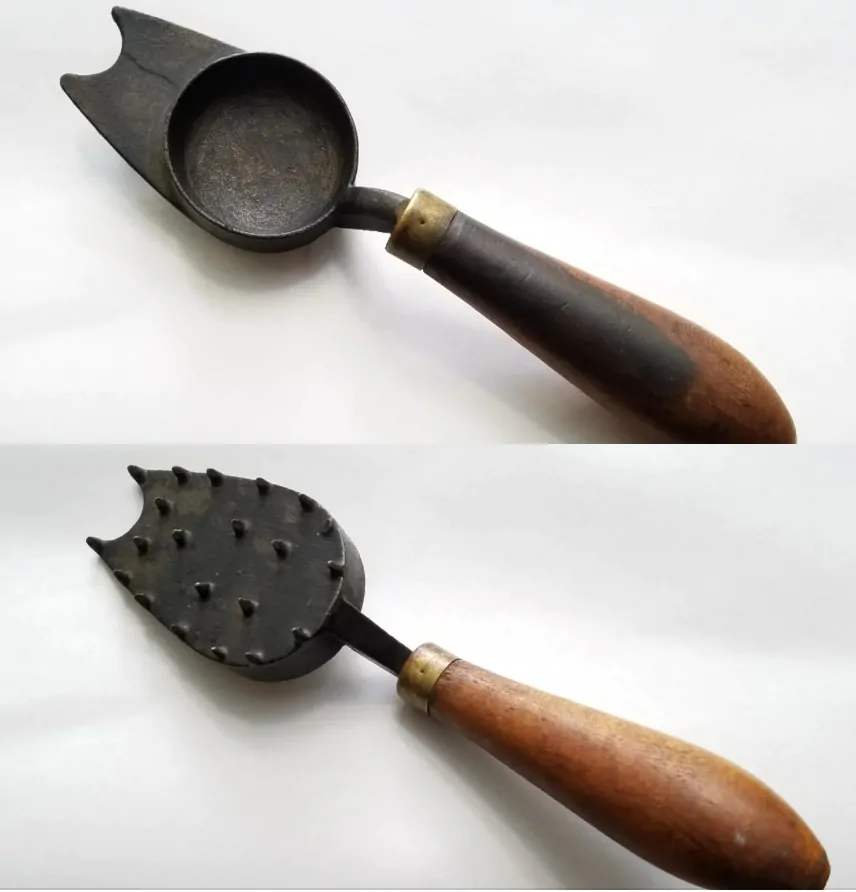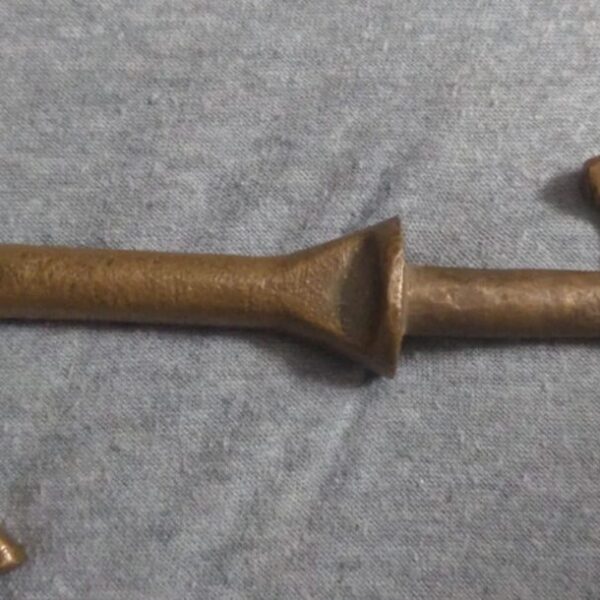The world of antiques is filled with mysteries, where objects from the past wait silently, holding secrets of their former use and significance.
One such enigma recently captured the imagination and curiosity of collectors and enthusiasts alike—a peculiar tool that had stumped antique dealers for years and even left four Antiques Roadshow appraisers scratching their heads in bewilderment.

This object, with its unusual design and obscure function, became a topic of intense speculation and investigation. The breakthrough came not through traditional channels but via the collective wisdom of the internet, specifically a dedicated community on Reddit.
Here, the mysterious artifact was finally identified: it was a Mexican elbow juicer, an ingenious device designed for extracting juice from citrus fruits.
The Mexican elbow juicer, so named for its resemblance to the bending of an elbow when in use, is a testament to the simplicity and efficiency of traditional kitchen tools.
Unlike modern electric juicers, this manual device requires the user to apply force, leveraging the mechanical advantage offered by its design to squeeze every last drop of juice from oranges, lemons, limes, or any other citrus fruit.
Its compact and durable construction made it an essential utensil in kitchens, especially in regions where citrus fruits are a staple ingredient in the culinary repertoire.
For years, the identity of this tool eluded even the most seasoned antique dealers and experts. Its design, while practical, does not immediately reveal its purpose to those unfamiliar with it.
The Mexican elbow juicer typically consists of two hinged metal parts: one with a conical ridged surface to hold the fruit, and the other a solid piece that presses into the fruit when the handles are brought together. This action effectively inverts the fruit peel, maximizing juice extraction while minimizing effort and mess.
The revelation of the tool’s identity sheds light on the broader theme of culinary innovation and the evolution of kitchen gadgets over time. It underscores how necessity, coupled with creativity, has led to the development of specialized tools designed to make food preparation more efficient.
The Mexican elbow juicer, in particular, reflects a time when manual kitchen tools were engineered with a keen understanding of ergonomics and utility, long before the advent of electric appliances.
Discovering the purpose of the Mexican elbow juicer also highlights the role of community and shared knowledge in preserving and understanding cultural and historical artifacts.
The internet, and platforms like Reddit, have democratized access to information, allowing individuals from around the world to collaborate in solving mysteries that have baffled experts for years.
This collective problem-solving process not only leads to the identification of obscure objects but also enriches our understanding of the past and the everyday lives of people who used these tools.
In conclusion, the journey from mystery to identification of the Mexican elbow juicer serves as a fascinating case study in the world of antiques and collectibles. It illustrates the challenges and rewards of uncovering the past’s secrets, the importance of community in historical inquiry, and the enduring relevance of traditional tools in our modern lives.
As we continue to explore and question the artifacts left behind by previous generations, we are reminded of the ingenuity and resourcefulness that characterize human innovation.
The Mexican elbow juicer, once a puzzling artifact, now stands as a symbol of the rich tapestry of culinary history and the shared quest for knowledge that connects us across time and space.

